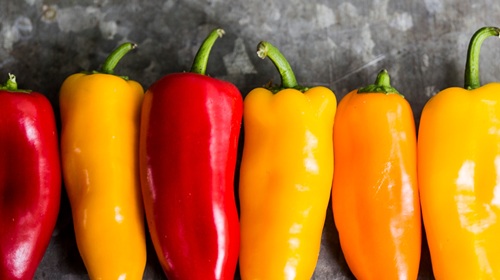Apr 20th 2025
How to Grow Hydroponic Peppers: Tips & Guide
Have you given hydroponic peppers any thought? With little soil and space requirements, hydroponic gardening is an excellent option to start growing peppers. Additionally, a lot of the insect issues that come with conventional outdoor pepper cultivation are eliminated. We'll explain in this post how simple it is to begin cultivating your own hydroponic peppers.
A Step-by-Step Guide to Growing Peppers Hydroponically
Step 1: Choose a Hydroponic Pepper Variety
Your personal tastes, the length of the growing season, and the environment where you are will all influence the pepper variety you select. Popular options for any hydroponic system are bell peppers, chili peppers, sweet peppers, green peppers, and a variety of spicy peppers.

Step 2: Choose a Growing Medium
While there are several solutions available, some are more effective than others. A soilless mix is one of the greatest choices for hydroponic pepper cultivation. Rockwool cubes, perlite, and peat moss make up this mixture. It is ideal for peppers since it is lightweight and permits enough drainage.
Step 3: Prepare Pepper Seeds for Germination
Select premium sweet pepper seeds, ideally those that work well with hydroponics. Make use of a germination-friendly medium, like rockwool cubes, coco coir, or specifically made seed germination pads. The seeds should be placed in or on the germination media. You can insert the seeds into tiny holes that have already been formed if you're using rockwool cubes.
Step 4: Monitoring and Transferring
Keep the medium wet and, if needed, lightly cover the seeds. Vermiculite can be sprinkled over your seeds and has great water retention to keep your seeds moist. To maintain humidity, use a sprayer to mist water on a regular basis. Move the seeds to a bright spot as soon as they start to sprout. Track the development of seed germination. The seedlings can be moved to the hydroponic system after they have produced genuine leaves.

Step 5: Growing Conditions for Hydroponic Peppers
- Light Requirement: For energy efficiency and a constant light spectrum, use LED grow lights. For peppers to thrive, they need 14–16 hours of light every day. For best coverage, place lights 12 to 18 inches above the plants.
- Temperature & Humidity: Keep the temperature between 70 and 75°F (21 and 24°C) and the humidity between 40 and 60%. Mold and sickness may be avoided with proper air movement.
- Water & pH Monitoring: How effectively your plants take nutrients depends on the pH of your fertilizer solution. A slightly acidic pH range of 5.5 to 6.5 is ideal for peppers. Use pH up or pH down solutions to test your pH often and make any adjustments.
- Nutrients: Select a hydroponic nutrient solution made especially for peppers and other fruiting crops. The macro and micronutrients in these treatments are necessary for robust development, blooming, and abundant harvests. Observe the mixing and application guidelines provided by the manufacturer.
Step 6: Harvesting & Pruning of Hydroponic Peppers
It's time to harvest your peppers once they've grown for a few weeks. Using a sharp knife, cut the peppers off the plant. If you plan to use the peppers immediately, rinse them with cold water and pat dry; if you plan to keep them, place them in a plastic bag and put them in the refrigerator.
Your plants may continue to provide fruit after the initial harvest, depending on the kind you're cultivating. If so, carefully cut off the fruit. If you can preserve your stems and leaves for a future harvest, you should avoid damaging them.
Final Thoughts
Using hydroponics is a great way of growing a variety of peppers. By following these steps you’ll have a harvest of tasty peppers which will add some zest and color to your meals. Moreover, hydroponic or aquaponic farming is less likely to have pest issues, particularly in a more carefully regulated indoor setting.




